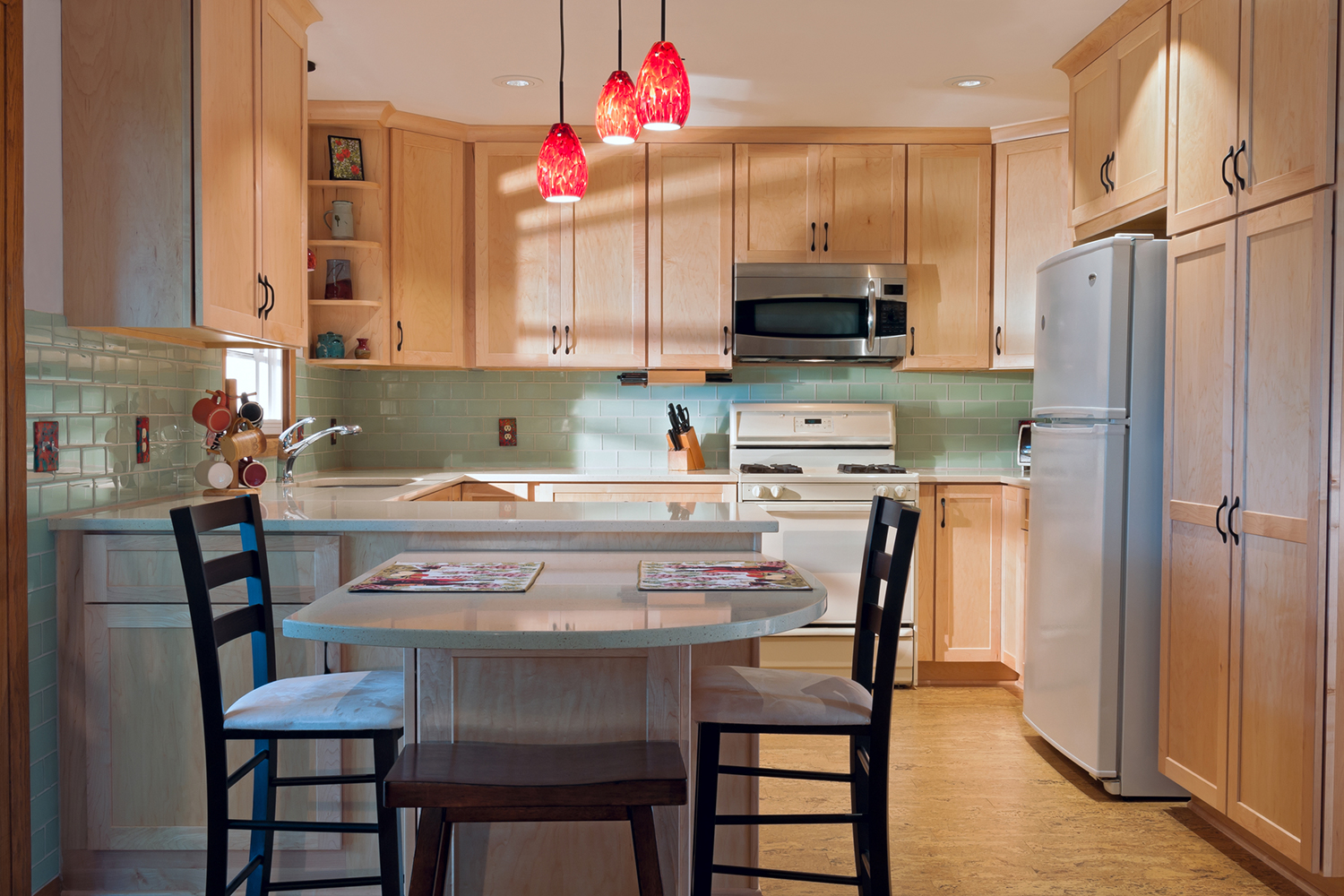The kitchen is a bustling place in most homes: Meals are made, conversations happen, and days are planned. That’s probably why it’s one of the most popular rooms to renovate according to The National Association of Home Builders. And with the improving economy, both remodeling and new home building and are surging.
Why Remodel?
Choosing to build or remodel with sustainably in mind can help families reduce their carbon footprint and create a healthier home. Home energy accounts for 19 percent of a family’s total environmental impact, and the kitchen uses a large portion of energy in most homes, as well as a sizable amount of water. By selecting the right eco-friendly materials, low-flow faucets, and efficient appliances, a family can reduce energy use and utility costs. As an added bonus, avoiding the use of toxic chemicals in the construction process can improve indoor air quality.
A new kitchen also offers an opportunity to design a more sustainable lifestyle. The choices we make in our kitchens—whether it’s ordering takeout or tossing together a salad with veggies from the farmers’ market—make a huge impact on the health of agricultural systems and wider ecosystems. Food actually accounts for a bigger portion of our ecological impact than home energy. The ultimate sustainable kitchen is one that encourages green living beyond just counter materials and appliances, and it all starts during the design phase.
Design for Sustainability
-
Remember, Size Matters
Bigger is not always better, especially when it comes to sustainability. Smaller spaces require fewer building materials and less energy to heat and cool. A smart layout with wise use of cabinets and countertops can make the most of a smaller kitchen.
-
Think Timeless
The key to a sustainable building project is to create something durable because most construction projects require resources and energy for execution. Careful planning before breaking ground can prevent the need for a move or later renovations. Consider your home’s future. What will the family need in five to ten years? Will an aging family member require special accommodations? Assess the durability of every material. It does not matter how green something is if it has to be ripped out in a couple of years. And try to keep decor as fresh as possible by choosing classic styles. Don’t get stuck with the avocado green appliances and paisley wallpaper of tomorrow.
-
Plan for Natural Lighting and Ventilation
Windows and skylights can minimize the need for artificial lighting, passively heat a room, provide ventilation, and improve air quality. But plan wisely, or they’ll drain heat and energy in the winter and make a room scorching hot in the summer. South-facing skylights provide the greatest potential for passive heating, but often allow unwanted heat gain in the summer. To prevent excessive summer heat, install skylights under the shade of deciduous trees or add movable coverings or a special glaze, and carefully consider the placement of windows and awnings. Another way to create more natural light in a kitchen is to create an open floor plan.
Construct a Sustainable Lifestyle.
Even the greenest architecture and appliances won’t counteract a wasteful lifestyle. Incorporate aspects of green living right into the plans to make a sustainable lifestyle even easier.
-
Design a Kitchen Garden
During the Renaissance, the French built potagers, or kitchen gardens, which provided food and herbs for households year-round. Kitchen gardens were designed to be low maintenance and aesthetically beautiful, with lots of edible perennials. Even small vegetable gardens or herb patches help a family connect with nature and eat healthier—the closer to the kitchen, the better.
-
Create an Indoor Growing Station
No outdoor growing area to admire from the kitchen window? Create an indoor herb or vegetable growing station in a sunny window. Most edible plants require six hours of light daily, either from sunlight or a grow light. Many plants, such as lettuce, celery, ginger, potatoes, bean sprouts, garlic, and onions, can be grown from kitchen scraps. Bonus: Indoor plants help improve air quality.
-
Build a Composting System
Each person can prevent 140 pounds of waste from going into landfills each year by composting. That’s important for many reasons, but mainly because food waste breaks down in landfills and produces methane, a greenhouse gas. Composting turns kitchen scraps into compost, further reducing the need for fertilizer, pesticides, and water. Build a compost bin outside and keep a container next to the sink to collect scraps, or tuck a homemade compost or worm bin under the sink.
-
Plan for Food Preservation
Local food is most sustainable, but many of us don’t have the space or tools to store 20 pounds of pears when they’re ripe at the farmer’s market, or a season’s worth of homemade tomato sauce. By incorporating a pantry, dehydrator, efficient freezer, or other food preservation tools into new kitchen plans, a family can take advantage of local and sustainable food options.





